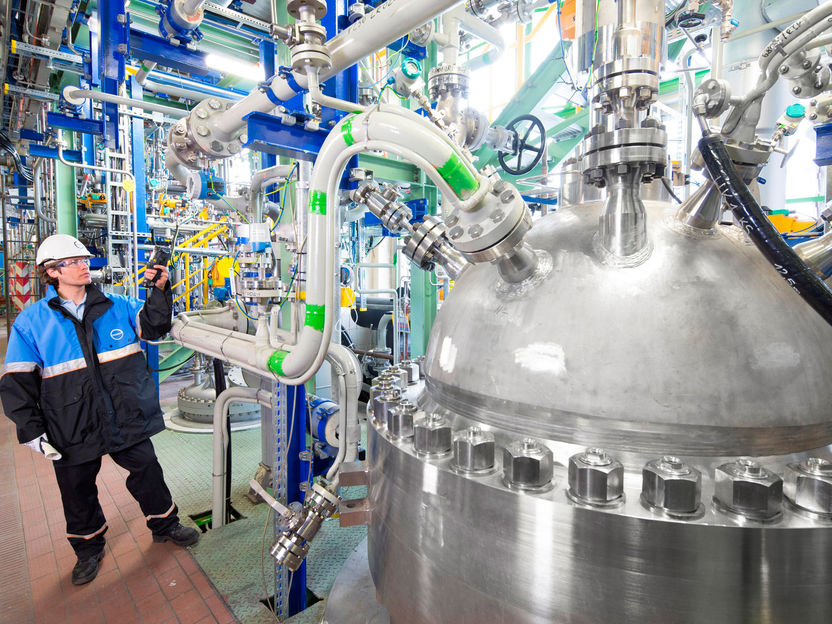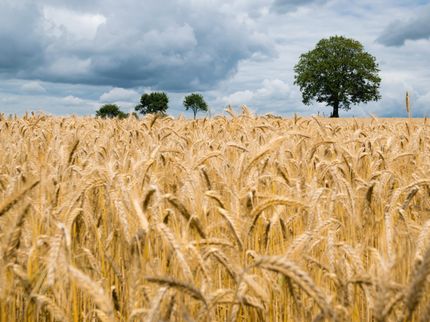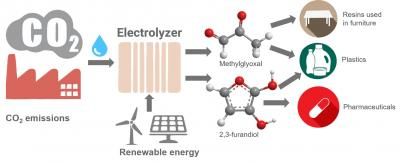Covestro launches industrial production of plastics using carbon dioxide
Process helps cut the use of crude oil
carbon dioxide instead of crude oil – Covestro is now, for the first time, using CO2 to produce plastics on an industrial scale. On Friday, the company opened a production plant for an innovative foam component made with 20 percent CO2 at its Dormagen site near Cologne, Germany. The new process saves a proportional amount of the traditional oil-based raw material, thus making a contribution to sustainability that Covestro believes offers considerable potential.
“We have to change the way we look at CO2, and we will. Using it as an alternative source of raw materials is a solution to some of the biggest challenges of our time – finding a replacement for finite fossil resources such as oil and gas and closing material cycles. Thanks to our innovative process and the launch of our production operations in Dormagen, we see ourselves as a pioneer in this area – true to our vision ‘To make the world a brighter place’,” said Covestro CEO Patrick Thomas at the opening ceremony, which was attended by more than 150 guests from business, science and politics.

Carbon dioxide as new raw material: At this production plant in Dormagen, Covestro is now incorporating 20 percent CO2 into an important foam component.
Covestro
Long-term perspective
“This method of using carbon dioxide as a raw material is an important step as we move toward a sustainable future. The German Federal government is promoting the use of CO2 as a raw material in order to expand the chemical industry’s raw materials basis and open new avenues to sustainability,” emphasized Thomas Rachel, Parliamentary State Secretary from the German Federal Ministry of Education and Research. It supported Covestro’s technology financially in the research and development phase.
Professor Ernst Schmachtenberg, Rector of RWTH Aachen University, added: “Making efficient use of the carbon dioxide molecule, which is normally slow to react, is a real scientific and technical challenge. We have made a breakthrough by combining application-centric basic research with research-based industrial practices.”
Covestro scientists worked hand-in-hand with experts from the CAT Catalytic Center in Aachen – a research institute operated jointly with RWTH – to find the right catalyst that would make the chemical reaction with CO2 possible.
For mattresses and upholstery
In Dormagen, Covestro is now using carbon from CO2 to manufacture a new type of polyol. These are core building blocks for polyurethane foam – a versatile material that is used in many industries around the world and that we encounter throughout our daily lives. The carbon dioxide is chemically bound into the material.
The company has invested some EUR 15 million in the new plant, which has an annual production capacity of 5,000 metric tons. The CO2 used is a waste product from a neighboring chemical company.
The new CO2-based polyol has been engineered initially for flexible polyurethane foam intended for use in mattresses and upholstered furniture. In terms of quality, the foam achieves at least the same high standards as conventional material produced using only petrochemical raw materials, i.e. crude oil.
Environmentally friendly processes
By eliminating the use of crude oil and saving the energy otherwise used to process that oil, the method is more environmentally friendly than conventional production processes. Thanks to the catalyst and the considerable energy contained in the remaining content of petrochemical raw materials, no additional energy needs to be expended to make the low-reactivity CO2 react.
If the new CO2-based products are received as warmly as is hoped, Covestro can envisage significant production expansion. In addition to flexible foam, the company is also working on manufacturing many other plastics with carbon dioxide. Its vision is to one day largely dispense with crude oil in plastics production.
Most read news
Other news from the department manufacturing

Get the chemical industry in your inbox
By submitting this form you agree that LUMITOS AG will send you the newsletter(s) selected above by email. Your data will not be passed on to third parties. Your data will be stored and processed in accordance with our data protection regulations. LUMITOS may contact you by email for the purpose of advertising or market and opinion surveys. You can revoke your consent at any time without giving reasons to LUMITOS AG, Ernst-Augustin-Str. 2, 12489 Berlin, Germany or by e-mail at revoke@lumitos.com with effect for the future. In addition, each email contains a link to unsubscribe from the corresponding newsletter.





























































